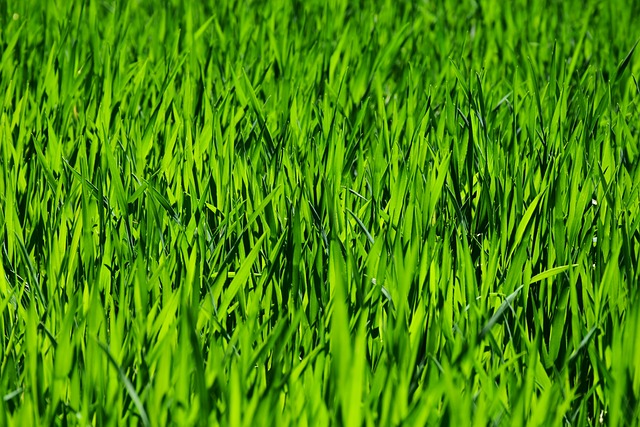Mastering Lawn Care and Eco-Friendly Landscaping Design for a Vibrant Outdoor Space
Lawn care and landscaping are essential practices for creating a healthy, diverse, and visually appealing outdoor environment that complements your home and suits your lifestyle. A successful regimen involves understanding your grass type's…….

Lawn care and landscaping are essential practices for creating a healthy, diverse, and visually appealing outdoor environment that complements your home and suits your lifestyle. A successful regimen involves understanding your grass type's needs, including tailored mowing, optimal irrigation, and balanced fertilization to maintain soil health and support plant growth. Key lawn care activities like controlling thatch, managing weeds and pests, and aerating the soil are crucial for a robust and sustainable lawn. Selecting plants that thrive in your local climate and soil type is vital for an integrated landscape design that is both functional and aesthetically pleasing. Integrating eco-friendly practices such as using native plants, organic enrichments, rain gardens, xeriscaping, and permeable paving promotes biodiversity, conserves water, and enhances stormwater management. Seasonal lawn care maintenance, like aeration, mowing at the right height, efficient irrigation, mulching, and overseeing in fall, ensures your lawn remains healthy year-round. By adhering to these practices, you can achieve a sustainable, beautiful landscape that aligns with ecological principles and the best in lawn care and landscaping.
Embark on a journey through the art of landscaping design and implementation, where lush lawns and thoughtful hardscapes unite in harmony. This article delves into the foundational aspects of lawn care, guiding you to cultivate a thriving landscape that reflects both your home’s aesthetic and the surrounding environment. Learn how to assess your outdoor space effectively, selecting plants and features that resonate with your personal taste while complementing your home. Additionally, explore eco-friendly practices that not only benefit the planet but also ensure a sustainable and vibrant landscape throughout the seasons. Master the intricacies of maintaining your outdoor oasis with practical tips and best practices for year-round vitality, all within the realm of Lawn Care and Landscaping.
- Understanding the Fundamentals of Lawn Care for a Thriving Landscape
- Assessing Your Outdoor Space: Planning for Effective Landscaping Design
- Selecting Plants and Features that Complement Your Home and Environment
- Implementing Eco-Friendly Practices in Your Landscaping Project
- Maintaining Your Landscape: Tips and Best Practices for Year-Round Vibrancy
Understanding the Fundamentals of Lawn Care for a Thriving Landscape

Engaging in lawn care is a foundational aspect of maintaining a vibrant and healthy landscape. A well-tended lawn not only enhances the aesthetic appeal of your outdoor space but also promotes ecological diversity and resilience. To achieve this, it’s crucial to understand the specific needs of your grass variety, considering factors like soil type, local climate, and seasonal weather patterns. Regular mowing at the correct height for your grass species, proper irrigation to maintain moisture levels without overwatering, and fertilization with the right balance of nutrients are key practices in lawn care. Additionally, managing thatch build-up, controlling weeds and pests, and aerating the soil to improve oxygen and nutrient exchange are all essential steps in the upkeep of a lush lawn. Implementing these strategies not only contributes to the health of your grass but also sets a solid foundation for your overall landscaping design, creating a cohesive and thriving outdoor environment.
Integrating landscaping principles with meticulous lawn care ensures that your green space is both beautiful and sustainable. Strategic lawn care practices, such as over-seeding areas with sparse growth to promote density and diversity, can help prevent diseases and pest infestations. Complementing these efforts with the thoughtful addition of native plants, shrubs, and trees can create an ecosystem that supports local wildlife while enhancing the landscape’s visual appeal. By combining the science of lawn care with the artistry of landscaping design, you can cultivate a yard that is both functional and aesthetically pleasing, offering a serene retreat from daily life and a welcoming space for family and friends.
Assessing Your Outdoor Space: Planning for Effective Landscaping Design

When embarking on a landscaping project, the first step is to thoroughly assess your outdoor space to plan for an effective and aesthetically pleasing design. Begin by observing the natural lay of your land, noting areas of sunlight and shade throughout the day. This will inform the selection of plants that thrive in your specific environment, a key aspect of successful lawn care and landscaping. Consider the size and shape of your property, as well as its topography, to determine where to allocate spaces for gardening, entertainment, or relaxation. Identifying existing features such as trees, rocks, or water bodies can inspire design elements that complement and enhance these natural attributes.
Once you have a clear understanding of your space’s characteristics and potential, the next step is to establish goals for your landscaping project. Reflect on how you intend to use your outdoor area—perhaps for family gatherings, quiet reading nooks, or play spaces for children. These functions will guide the layout and the choice of materials and plants that are both functional and beautiful. Effective lawn care and landscaping design also involve considering drainage patterns and soil types to ensure proper water management and plant health. By carefully planning each element with attention to detail, you can create a harmonious and sustainable outdoor environment that reflects your lifestyle and complements the natural beauty of your property.
Selecting Plants and Features that Complement Your Home and Environment

When crafting a landscape design that enhances your home and its surrounding environment, careful selection of plants and features is paramount. Lawn Care and Landscaping practices should be tailored to the local climate and soil conditions to ensure the health and vitality of your outdoor spaces. Choose plant species that not only thrive in your region’s typical weather patterns but also complement the existing architectural style of your home. Consider the mature size and growth habits of trees, shrubs, and perennials to avoid future maintenance issues. A well-designed landscape harmonizes with the house, creating a cohesive outdoor room that extends your living space.
Incorporating elements like pathways, water features, or outdoor lighting should also be informed by the immediate environment. These features not only enhance the aesthetic appeal but also serve functional purposes, such as guiding movement through the space and highlighting key areas during different times of the day or year. Lawn Care and Landscaping go hand in hand with selecting the right grass type for your soil and sun exposure, ensuring a lush, green canvas that complements the plantings and outdoor features. By integrating native plants, you not only foster biodiversity but also reduce the need for maintenance-intensive upkeep. This synergy between thoughtful design and practical landscaping creates an outdoor environment that is both beautiful and sustainable.
Implementing Eco-Friendly Practices in Your Landscaping Project

When embarking on a landscaping project, integrating eco-friendly practices is not merely an environmental choice but also a sustainable approach to lawn care and landscaping that yields long-term benefits. Selecting native plants for your garden not only supports biodiversity but also reduces the need for extensive watering and maintenance. These hardy species are adapted to local climate conditions, minimizing the reliance on irrigation and fertilizers that can harm local ecosystems. Furthermore, the use of organic matter in soil enrichment promotes a healthy, vibrant landscape while avoiding the potential environmental impacts of synthetic chemicals.
Incorporating eco-friendly elements such as rain gardens, xeriscaping, and permeable paving can significantly enhance water conservation and stormwater management. Rain gardens, for instance, are designed to collect and absorb rainwater, which nourishes plants and prevents runoff that might otherwise carry pollutants into water bodies. Xeriscaping focuses on landscaping with drought-resistant plants to minimize the need for supplemental water. By thoughtfully arranging these elements within your lawn care and landscaping design, you create a sustainable and eco-conscious outdoor space that contributes positively to the environment.
Maintaining Your Landscape: Tips and Best Practices for Year-Round Vibrancy

Regular upkeep is the cornerstone of a thriving landscape design, ensuring year-round vibrancy that enhances both aesthetic appeal and environmental health. To achieve this, incorporating lawn care practices tailored to seasonal changes is essential. During the spring and fall, aerate your lawn to improve soil and root contact, allowing for better nutrient uptake and air circulation. Consistent mowing at a height optimal for your grass type encourages deeper root growth and crowding out weeds, which is crucial for maintaining a lush, healthy turf.
Throughout the summer months, monitor your irrigation system to conserve water and prevent overwatering, which can lead to disease and waste. Mulching around plants helps retain soil moisture and suppress weeds, while also moderating soil temperature fluctuations that can occur in the spring and fall transitions. As autumn progresses, prepare for the winter by cleaning up fallen leaves and debris, which can suffocate grass and garden beds if left unchecked. Additionally, in late fall or early winter, it’s advisable to overseed your lawn to fill in bare spots and reinforce its resilience against the harshness of winter. Implementing these tips and best practices for lawn care and landscaping will not only maintain but also enhance your landscape’s beauty and health throughout the year.
Effective landscaping design transcends mere aesthetics; it intertwines with the health of our environment and the vibrancy of our homes. By mastering the fundamentals of lawn care, carefully planning your outdoor space, choosing plants and features that resonate with both your home and the local ecosystem, and committing to eco-friendly practices, you can create a landscape that not only thrives but also supports biodiversity and offers serene beauty. Maintaining this ecosystem requires diligence and care throughout the seasons, ensuring your investment in lawn care and landscaping pays off with lasting appeal and ecological harmony. Embrace these principles to transform your outdoor area into a living canvas that captures the essence of your personal style while honoring the environment.







